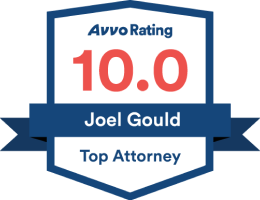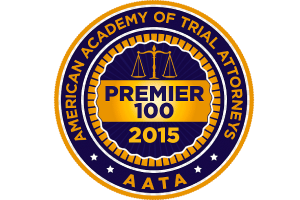Experience and Success
Pursuing a Lawsuit
Pursuing a Construction Injury Lawsuit in Illinois
Above we outlined how construction accident cases emerge and the types of claims that they typically generate. Now, we want to highlight some of the main aspects of your trial. This might help you more clearly understand the lifecycle of the case.
Statute of Limitations
One of the first things to consider in your construction accident case is the relevant statute of limitations. Statute of limitations set forth a period of time for the bringing certain kinds of legal actions. If a lawsuit is not filed within the prescribed time after the underlying incident, your case may be barred forever. The purpose and effect of the statute of limitations is to encourage the timely filing of complaints after an incident and to protect defendants. With respect to construction accident lawsuits, the amount of time you have to file a claim can depend on several factors, including who you are suing and the type of claim you are bringing.
If you are suing a local public entity or special district, then you only have 1 year from the date of the incident. Some of the relevant law includes:
- 745 ILCS 10/8-101(a) “No civil action other than an action described in subsection (b) may be commenced in any court against a local entity or any of its employees for any injury unless it is commenced within one year from the date that the injury was received or the cause of action accrued.”
If you are suing for negligent design, supervision, or management of construction, or construction on an improvement to property, then you have four years from the date of the incident. Here is the relevant statutory language:
- 735 ILCS 5/13-214(a) “Actions based upon tort, contract or otherwise against any person for an act or omission of such person in the design, planning, supervision, observation or management of construction, or construction of an improvement to real property shall be commenced within 4 years . . . .”
If you are suing for general negligence or for wrongful death, then you generally have two years to file your claim.
- 735 ILCS5/13-202: “Actions for damages for an injury to the person . . . shall be commenced within 2 years next after the cause of action accrued . . . .”
- 740 ILCS 180/2: “Every such action shall be commenced within 2 years after the death of such person . . . .”
Because there are many factors that can impact the window of time you have to file your lawsuit, it is very important to speak with a knowledgeable attorney as soon as possible after the incident.
Drafting a Complaint
The outline of your case is the complaint. This is document you file with the court and serve upon the defendants to kick off the lawsuit. Before submitting a complaint, your lawyers will need to conduct a vast amount of research and investigation to determine who the potential defendants are and further develop theories of liability. Experts may need to be retained to help build up and develop the case. When drafting the complaint, the lawyers will need to marshal all of the facts and issues into this document in an organized and persuasive manner. Once the complaint is filed and c, defendants will respond to this with an answer and then there will be a whole series of other responsive documents that attempt to make a variety of legal points. However, for the complaint itself, here are the broad questions that must be answered:
- Who injured you and how were you injured?
- What entitles you to relief from the court?
- What kind and amount of relief are you entitled to receive?
Discovery
In civil litigation, there is a formalized process for the gathering and exchange of relevant information and materials between plaintiffs and defendants. That process is known as discovery and it includes tools such as interrogatories, depositions, requests for admission, and requests for document production. The particular mechanics, strengths, and weaknesses of these discovery procedures are endless. Some of the points of emphasis that a plaintiff should focus on in a construction accident case are:
- Who had ultimate control/responsibility for the supervision, organization, and management of the construction site?
- What companies, contractors, or subcontractors were involved in the construction?
- What equipment/substances were used and who were their manufacturers/distributors/retailers?
Motion Practice
Almost every lawsuit involves “motion practice.” This is the method by which you ask the court to do something. For example, you might want to exclude the defendant from being able to call a certain person as a witness because there prejudicial impact on the case outweighs their relevant testimony; or you can attempt to disqualify an expert if he/she lacks proper qualifications or knowledge of a certain topic. Alternatively, you might want to bring in additional testimony or evidence to give another witness’s story a more complete picture. Here are some of the more important motions at your disposal:
- Motion for summary judgment or motion for a directed verdict
- Motions in limine
- Motion for a new trial
Trial Standard
The ultimate goal of your case is to convince a jury that the defendant was at fault by a preponderance of the evidence, the standard of proof used in personal injury lawsuits. This means that the weight of your case is greater than the other side’s in its convincingness, truth, and accuracy. Alternatively, in criminal cases, the standard is beyond a reasonable doubt , requiring a higher burden of proof to convict a defendant.
Hopefully these sections give you a better sense of what a construction accident lawsuit generally entails. However, because every case is different, it is important to speak with a knowledgeable attorney to determine exactly what you need to do in order to protect your legal rights.
For a free consultation about your construction accident injury case, contact Joel Gould Law Offices today or call 773-281-8744. The Construction Accident Injury Lawyers at Joel Gould Law Offices handle cases in Chicago and throughout Illinois. They also work closely with some of the best personal injury and worker’s compensation attorneys across the country on cases in other states and jurisdictions.








